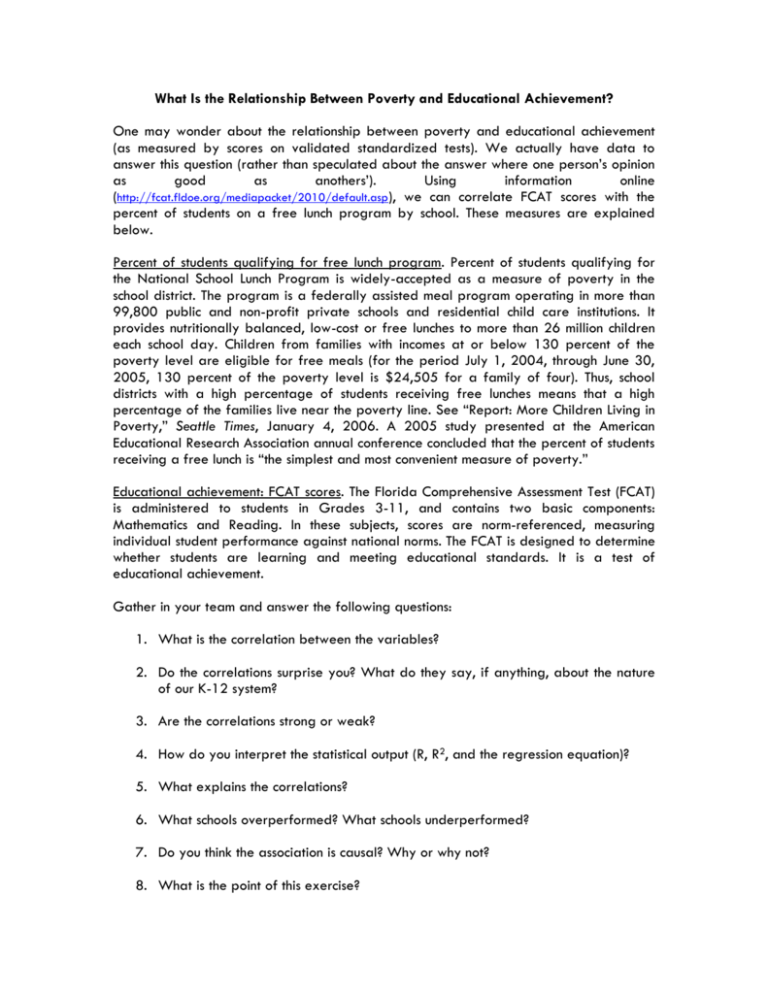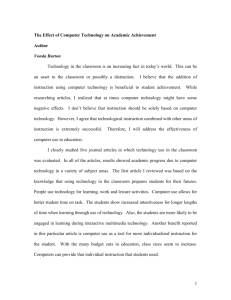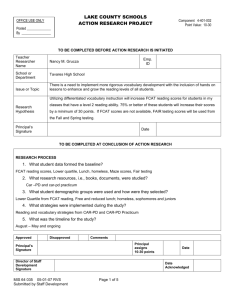Percent of students qualifying for the National School Lunch
advertisement

What Is the Relationship Between Poverty and Educational Achievement? One may wonder about the relationship between poverty and educational achievement (as measured by scores on validated standardized tests). We actually have data to answer this question (rather than speculated about the answer where one person’s opinion as good as anothers’). Using information online (http://fcat.fldoe.org/mediapacket/2010/default.asp), we can correlate FCAT scores with the percent of students on a free lunch program by school. These measures are explained below. Percent of students qualifying for free lunch program. Percent of students qualifying for the National School Lunch Program is widely-accepted as a measure of poverty in the school district. The program is a federally assisted meal program operating in more than 99,800 public and non-profit private schools and residential child care institutions. It provides nutritionally balanced, low-cost or free lunches to more than 26 million children each school day. Children from families with incomes at or below 130 percent of the poverty level are eligible for free meals (for the period July 1, 2004, through June 30, 2005, 130 percent of the poverty level is $24,505 for a family of four). Thus, school districts with a high percentage of students receiving free lunches means that a high percentage of the families live near the poverty line. See “Report: More Children Living in Poverty,” Seattle Times, January 4, 2006. A 2005 study presented at the American Educational Research Association annual conference concluded that the percent of students receiving a free lunch is “the simplest and most convenient measure of poverty.” Educational achievement: FCAT scores. The Florida Comprehensive Assessment Test (FCAT) is administered to students in Grades 3-11, and contains two basic components: Mathematics and Reading. In these subjects, scores are norm-referenced, measuring individual student performance against national norms. The FCAT is designed to determine whether students are learning and meeting educational standards. It is a test of educational achievement. Gather in your team and answer the following questions: 1. What is the correlation between the variables? 2. Do the correlations surprise you? What do they say, if anything, about the nature of our K-12 system? 3. Are the correlations strong or weak? 4. How do you interpret the statistical output (R, R2, and the regression equation)? 5. What explains the correlations? 6. What schools overperformed? What schools underperformed? 7. Do you think the association is causal? Why or why not? 8. What is the point of this exercise?











